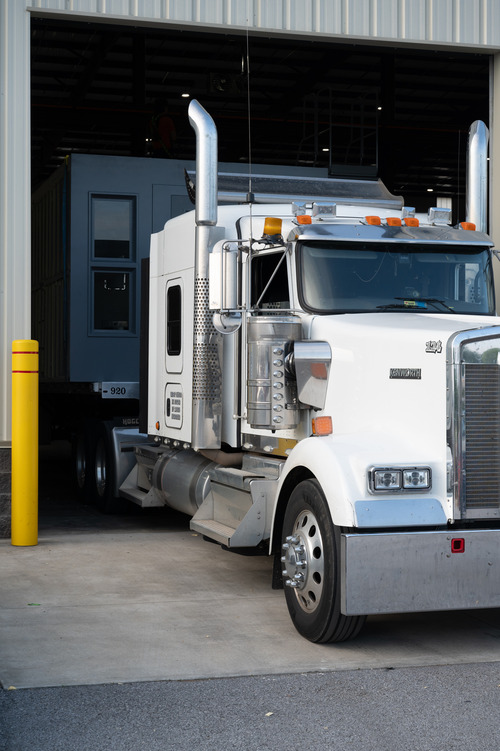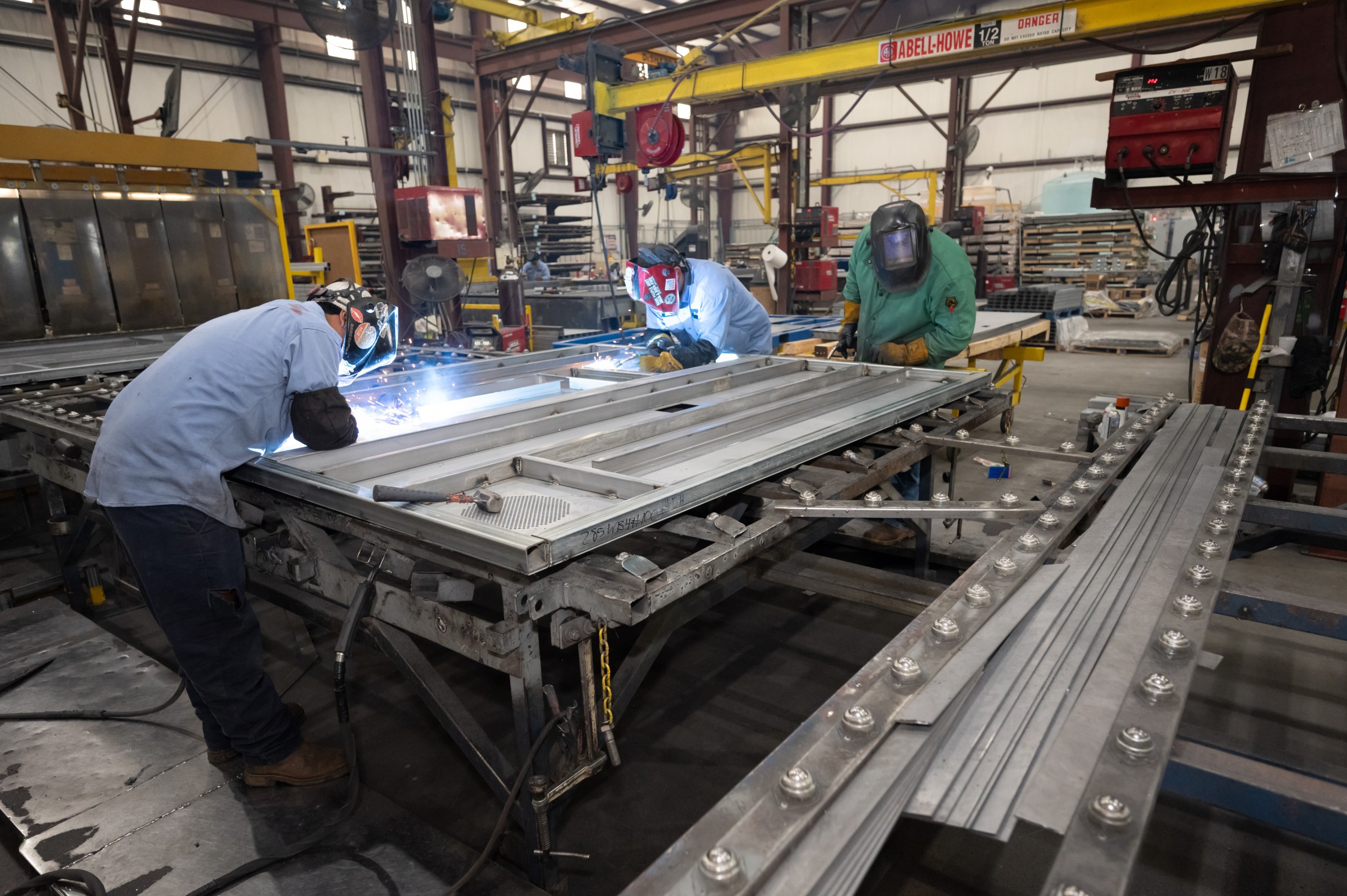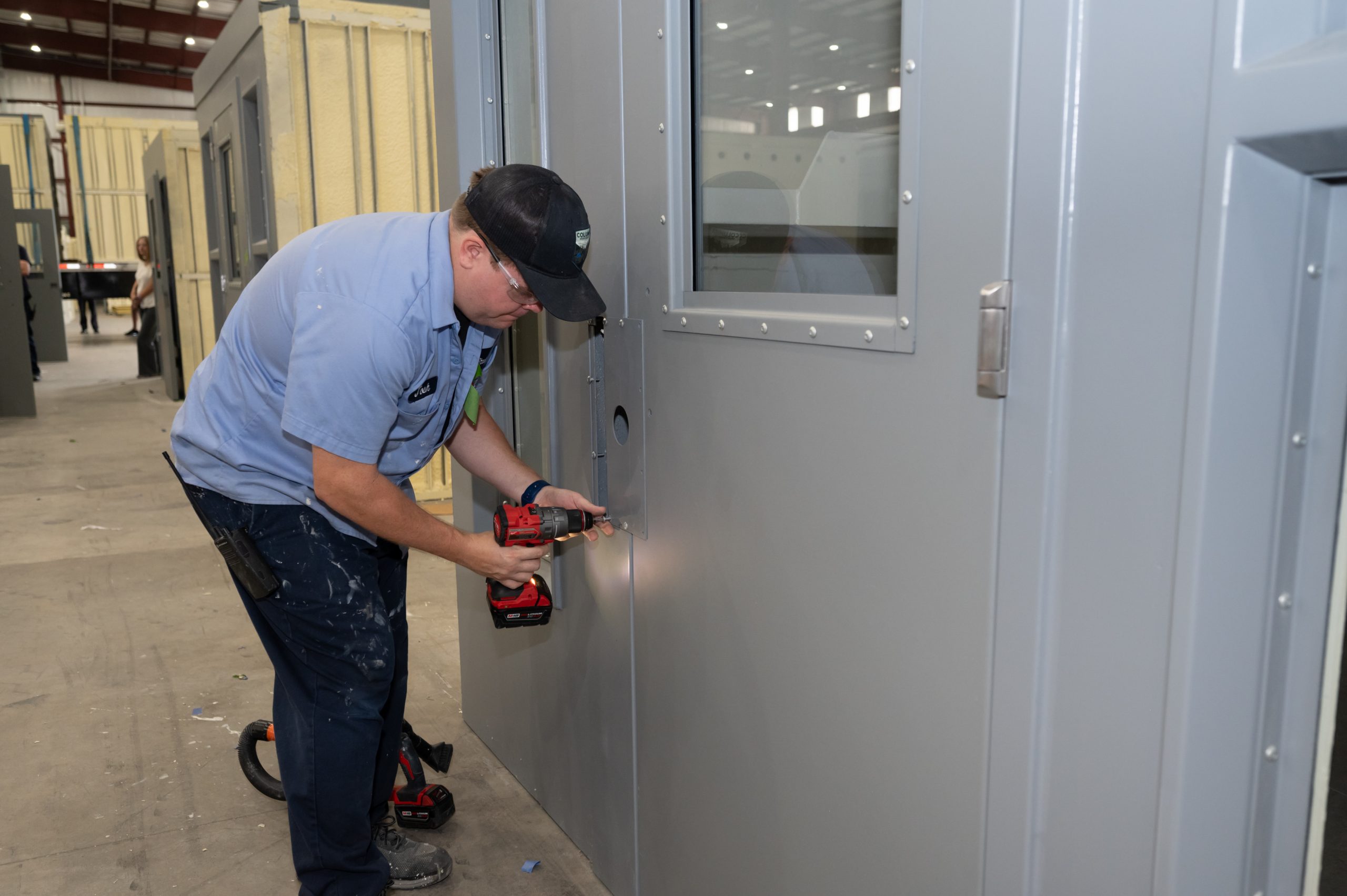Prison Locks: Innovations in Security Technology
Prison locks play a crucial role in maintaining the security and order within correctional facilities.
Understanding the different types of prison locks and their mechanisms can provide insight into how prisons keep both inmates and staff safe.
From traditional mechanical locks to modern electronic systems, the evolution of these locks reveals much about advancements in prison security.

Locks in prisons are not just simple devices; they are complex systems designed to withstand tampering and ensure controlled access.
The installation and maintenance of these locks are carefully managed to meet strict regulations and standards.
Key control and management also form a vital part of maintaining security, preventing unauthorized access, and ensuring accountability.
Facilities must regularly update and maintain their locking systems to address any security vulnerabilities.
This involves working closely with trusted detention hardware manufacturers and adhering to budget constraints.
By understanding these aspects, one can appreciate the intricate efforts behind prison security.
Key Takeaways
- Different types of locks are crucial to prison security.
- Regular maintenance and key management are vital.
- Facilities must work within regulations and budgets for updates.
History and Evolution of Prison Locks

Prison locks have evolved significantly from mechanical systems to advanced electronic and technological solutions. Understanding their history provides insights into the advancements in prison security.
Mechanical Locks
Mechanical locks were the first types used in prisons. They included sturdy designs crafted to withstand tampering.
Early designs employed basic lever and tumbler systems, evolving into more complex mechanisms.
Southern Steel, a notable manufacturer, produced robust locks for various institutions.
In the 20th century, Folger Adam became renowned for high-security mechanical locks used in correctional facilities.
Their locks were known for reliability and resistance to manipulation. Despite the emergence of electronic systems, mechanical locks remain in use due to their durability and simplicity.
Electronic Locks
The advent of electronic locks marked a significant shift, integrating more technology into prison security.
These systems often involve keycards or electronic keypads, allowing for easier access control.
Southern Folger, formed through the merger of Southern Steel and Folger Adam, played a significant role in developing these systems.
Electronic locks offer features like remote operation and automatic logging of access events.
They help improve security by minimizing the chances of human error often associated with mechanical locks.
Prisons today frequently use a combination of mechanical and electronic locks to enhance security.
Technological Advancements
Recent technological advancements have further transformed prison locks, incorporating features like biometric systems and smart technology.
Biometric systems use fingerprints, retinal scans, or facial recognition to ensure that only authorized individuals gain access.
Smart technology, including Internet of Things (IoT) devices, facilitates remote monitoring and control.
Southern Folger continues to innovate in this area, providing solutions that integrate these advancements.
These technologies not only enhance security but also help in improving operational efficiency by allowing better control and monitoring.
As technology continues to evolve, the future of prison locks will likely include even more sophisticated security solutions.
Types of Prison Locks
Different prison locks serve various security and operational needs within correctional facilities. This section explores the main types, such as Deadlocks, Cylinders, and Swinging Cell Locks, each with unique features.
Deadlocks
Deadlocks are a critical component of prison security.
These locks feature a bolt that can only be moved by rotating the key, ensuring that the door cannot be opened without authorization.
Deadlocks are often used on cell doors due to their reliability and resistance to tampering.
In detention settings, deadlock bolts play a crucial role in maintaining each cell’s integrity.
The bolts are designed to withstand significant physical force, which is important in an environment where security is paramount.
These locks are typically made from high-quality materials to ensure durability.
Deadlocks might also be paired with other security systems, such as electronic monitoring, to provide an added layer of protection.
Given their importance, maintaining and regularly inspecting deadlocks is essential for prison safety.
Cylinders
Cylinder locks offer versatility in prison environments.
These locks use a cylinder mechanism where the correct key is required to align internal pins, allowing the lock to turn and open.
Cylinder locks are valuable for their ability to be rekeyed easily if security concerns arise.
These locks come in various forms, including standard pin cylinders, which are widely used for their balance of security and convenience.
In prisons, cylinder locks are often found on doors that require frequent access by staff, such as administrative areas and inmate housing unit entrances.
Another advantage of cylinder locks is their modular nature. The detachable core can be changed without replacing the entire lock, making it efficient for maintaining security protocols.
Durability and tamper resistance are key factors contributing to their use in correctional facilities.
Swinging Cell Locks
Swinging cell locks are designed specifically for cell doors that swing open, either inwards or outwards.
These locks must provide high security while allowing controlled movement and access. They often feature robust locking mechanisms that can withstand abuse.
Swinging cell locks typically include heavy-duty components, such as reinforced steel and anti-drill plates, to prevent tampering.
These locks are crucial in areas where inmates have periodic access to communal spaces, such as during exercise or meal times.
Manual and electronic versions of swinging cell locks are available.
The electronic variants can be integrated with central control systems, which allow guards to lock and unlock doors remotely, enhancing operational efficiency.
Proper installation and regular maintenance of swinging cell locks are essential to ensuring long-term security.
Installation and Maintenance
Installation and maintenance of prison locks are crucial for security and functionality. Proper installation ensures effectiveness, while regular maintenance and prompt repair prevent failures.
Lock Installation
Lock installation in prisons involves precise procedures to ensure reliability and security.
Mechanical locks, commonly used due to their durability, require expert installation.
Technicians must follow manufacturer guidelines, ensuring each lock is correctly aligned and secured to prevent tampering.
Using high-security screws and bolts adds to the integrity.
In maximum-security areas, additional measures like tamper-resistant escutcheon plates are often installed. These plates protect the locks from physical attacks.
For electronic locks, installers need to integrate wiring and power sources, ensuring compatibility with the facility’s systems.
Proper initial setup reduces future maintenance needs and lowers the risk of security breaches.
Routine Maintenance
Routine maintenance ensures that prison locks remain functional and secure over time.
Regular inspections are essential to identify wear and potential failures.
Staff should check mechanical locks for signs of rust, misalignment, or wear.
Lubrication of moving parts keeps the locks operating smoothly, enhancing lifespan.
Electronic locks require software updates and electrical checks.
Ensuring connections are secure and components are undamaged prevents malfunctions.
Maintenance schedules often include quarterly inspections, although high-use locks might need more frequent checks.
Documentation of all maintenance activities helps track any recurring issues, aiding in timely repairs and replacements.
Lock Repair
Despite routine maintenance, locks may still require repairs. Quick response to any issues prevents security risks.
Common problems in mechanical locks include broken keys, misaligned mechanisms, and worn-out parts.
Repairing these involves replacing damaged components and re-aligning parts to ensure proper function.
Electronic locks might face software glitches, power issues, or damaged wiring.
Technicians need to diagnose the problem accurately, often requiring specialized tools and knowledge.
Temporary measures, like additional manual locks or guards, provide security while repairs are made.
Ensuring all repairs meet original installation standards is crucial for long-term reliability.
For more information on installation and maintenance, check out this detailed guide on building materials, equipment, and systems.
Key Control and Management
Effective key control and management in prisons are essential for ensuring security and minimizing risks. This involves structured systems for keyway designs, establishing key control policies, and integrating electronic key management solutions.
Keyway Systems
Keyway systems are crucial for maintaining tight security in correctional facilities. They prevent unauthorized access and enhance control over who can access specific areas.
Keys in prisons are often restricted using unique keyways.
Staff members need specific keys designed to operate only certain locks. This prevents keys from being copied or used in other areas.
Security cuts and patented key sections are common methods to ensure only authorized keys fit.
Master key systems also allow high-ranking officers access while limiting subordinate access.
Key Control Policies
Key control policies are the backbone of prison security. They dictate the procedures for issuing, returning, and monitoring keys.
These policies ensure accountability and reduce the risk of lost or stolen keys.
Staff must sign out keys at the start of their shift and return them at the end.
This is often documented in a logbook or electronic system.
Regular audits and inspections are conducted to verify compliance.
Policies also cover response protocols for lost or compromised keys, including rekeying locks if necessary.
Electronic Key Management
Electronic key management systems enhance traditional key control methods with technology.
These systems store keys in secure cabinets that only release them to authorized personnel.
Access is often managed through PIN codes, biometrics, or key cards.
These systems provide real-time monitoring and automated logs of key usage.
This reduces manual errors and ensures that each key’s history is accurately tracked.
In addition, electronic key management can integrate with other security systems like alarm systems and surveillance cameras, providing a comprehensive security solution for the prison environment.
Security and Vulnerabilities
Security in prison locks is crucial for maintaining order and preventing escapes. The main points of interest include vulnerabilities to lock picking, resistance to burglary techniques, and the impact of wear and tear over time.
Lock Picking
Lock picking remains a significant threat to prison security.
Skilled individuals can exploit weaknesses in the lock mechanism, potentially bypassing security features.
Criminals may use tools like tension wrenches and picks to manipulate the lock’s pins.
Some inmates may have access to everyday objects that can be turned into improvised picking tools.
Trash in the strike can be another issue. Foreign objects can interfere with the locking mechanism, making it easier to pick.
Slipping the bolt is another tactic where pressure is applied to disengage the bolt from the strike plate without unlocking the lock.
Effective lock design and regular inspections can help mitigate these threats.
Burglar Resistance
Prison locks need to be resistant to various burglary techniques. This includes forced entry methods like drilling, sawing, and prying.
High-quality materials and reinforced locking mechanisms enhance resistance against these attacks.
Features to consider:
- Hardened steel construction: Resists cutting and drilling.
- Reinforced strike plates: Prevents tampering.
- Anti-pry shields: Protects against levering tools.
Proper installation is essential. Locks should be affixed securely, and all components, like screws and bolts, should be of high quality.
Regular training for staff on identifying tampering signs can also improve security.
Wear and Tear
Over time, prison locks are subject to wear and tear, which can compromise their security.
Daily use, exposure to the elements, and lack of maintenance all contribute to deterioration.
Worn parts, like springs and pins, can malfunction, making locks easier to pick or bypass.
Routine maintenance checks are vital. Technicians should look for signs of wear, such as rust, loose components, or difficulty in operation.
Regular lubrication and timely replacement of worn parts can ensure that locks remain functional and secure.
Upgrading locks to more durable models with wear-resistant features can also prolong their effectiveness. Investing in high-quality locks may seem costly, but it enhances long-term security and reduces the likelihood of escapes or breaches.
Detention Hardware Manufacturers
Detention hardware manufacturers focus on providing secure and reliable products for prisons, jails, and other detention facilities. Key players include companies based in the USA and various global providers.
USA-Based Manufacturers
In the USA, several companies specialize in manufacturing detention hardware.
RR Brink is one of the leading providers, known for their highly secure prison locks and door controls.
They offer a wide range of products such as deadbolt locks, control switches, and sliding door mechanisms.
Another major company is Southern Folger Detention Equipment Company, which emerged from the merger of two well-known firms, Southern Steel and Folger Adam.
Southern Folger provides comprehensive security solutions, including cell doors, frames, and locking systems designed to meet rigorous security standards.
Additionally, Norment Security Group specializes in electronic security systems. This includes integrated control systems that manage locking mechanisms and surveillance.
Their products ensure that prisons operate effectively and safely.
Global Providers
Globally, detention hardware manufacturers are essential for maintaining high security standards. In Europe, Vincotte USA and DeRuyter are notable companies providing advanced prison lock systems.
Vincotte USA specializes in electronic control systems, while DeRuyter focuses on mechanical locks and secure door systems.
In Asia, Shenzhen Smochin Technology is a key player, known for their modern biometric and electronic locking solutions.
These high-tech systems are used in many detention facilities, enhancing overall security.
Finally, Abloy, a Finnish company, is renowned for its superior locking systems used worldwide.
Their products include electromechanical locks and high-security keys, making them a trusted name in detention facility security.
Regulations and Standards
Prison locks must meet specific rules and standards to ensure quality, follow the law, and fit architectural designs. These rules help maintain security and order within prisons.
Quality Control
Quality control is crucial for prison locks. The locks must be tested for durability, reliability, and resistance to tampering.
Regular checks ensure they function properly over time.
- Durability: Locks must withstand high use and harsh conditions.
- Tamper-Resistance: Locks should resist picking or forced entry.
- Reliability: Locks need to work consistently to prevent malfunctions.
Manufacturers often follow strict protocols to test these aspects, ensuring the locks meet required standards and provide long-lasting security.
Compliance with Laws
Prison locks need to comply with various laws and regulations. These rules may vary based on location and specific requirements.
- Federal and State Laws: In the USA, federal and state laws dictate lock requirements.
- Safety Regulations: Locks must ensure the safety of both staff and inmates.
- Installation Standards: Proper installation methods are essential for compliance.
Meeting these legal standards is necessary to avoid penalties and ensure the security system is legally sound.
Architectural Consideration
Architects must consider various elements when designing prisons, including the integration of locks into doors and gates.
- Design Compatibility: Locks need to match the design and functionality of the prison doors.
- Space Requirements: Proper space for installing the locks must be accounted for.
- Aesthetic and Functional Balance: The design should balance safety with an acceptable appearance.
Getting the architectural fit right ensures that locks are both secure and seamlessly integrated into the prison’s structure.
Pricing and Budgeting
Prison locks are essential for maintaining security in correctional facilities. The cost of these locks can vary widely based on factors such as technology, type, and brand.
Factors Affecting Pricing:
- Type of Lock: Traditional mechanical locks are usually cheaper than advanced electronic ones.
- Technology: High-security locks with features like biometric scanning cost more.
- Brand: Well-known brands often charge a premium.
Average Costs:
- Mechanical Locks: $50 – $200 per lock.
- Electronic Locks: $150 – $500 per lock.
- Biometric Locks: $300 – $1,000 per lock.
Budgeting Considerations:
- Quantity Needed: Larger facilities require more locks, increasing total costs.
- Maintenance: Regular maintenance and potential replacement should be budgeted.
- Training: Staff may need training to use advanced locks, adding to the cost.
Example Costs:
| Lock Type | Average Cost |
|---|---|
| Mechanical | $50 – $200 |
| Electronic | $150 – $500 |
| Biometric | $300 – $1,000 |
Budgeting for prison locks also involves considering the broader prison budget.
In New York, the expense of maintaining correctional facilities can strain public funds, as seen in cases where the closure of a prison affected the state’s budget significantly.
The cost of security equipment like locks plays a crucial role in these budgets.
Addressing prison budgeting effectively involves balancing security needs with financial constraints, ensuring that money is spent wisely on necessary upgrades and replacements.
Frequently Asked Questions
Prison locks play a critical role in maintaining security and order within correctional facilities. This section will address common questions about the different types of locks, how they work, key security features, manufacturers, the function of cuff ports, and the management of keys and locks.
What are the different types of locks used in correctional facilities?
Correctional facilities use various locks including mechanical detention locks, electronic locks, and electromechanical locks. These locks are designed to be tamper-resistant and durable under extreme conditions.
How do mechanical detention locks operate?
Mechanical detention locks function through a series of levers and tumblers. They require a physical key to operate and are built to withstand significant force. These locks are known for their reliability and are commonly used in high-security areas.
What security features are integral to jail door locking mechanisms?
Jail door locking mechanisms include tamper-proof designs, deadbolt systems, and robust construction materials. Other features like key control protocols and alarm systems enhance security, ensuring that any unauthorized access attempts are detected immediately.
Who are the primary manufacturers of locks used in prison settings?
Some of the primary manufacturers of prison locks include Southern Folger, RR Brink Locking Systems, and Schlage. These companies specialize in high-security locks and have extensive experience in the correctional industry.
What is the function of a cuff port in correctional facility doors?
A cuff port, also known as a cuffing hatch, allows officers to restrain inmates without opening the door fully. This small, secure opening provides a safer method for handling restrained transfers and inspections.
How are keys and locks managed in a jail environment for security?
Keys and locks in a jail environment are managed through strict control protocols.
These protocols include regular audits, restricted access to key handlers, and the use of electronic key management systems.
These measures help prevent unauthorized access and ensure accountability.


